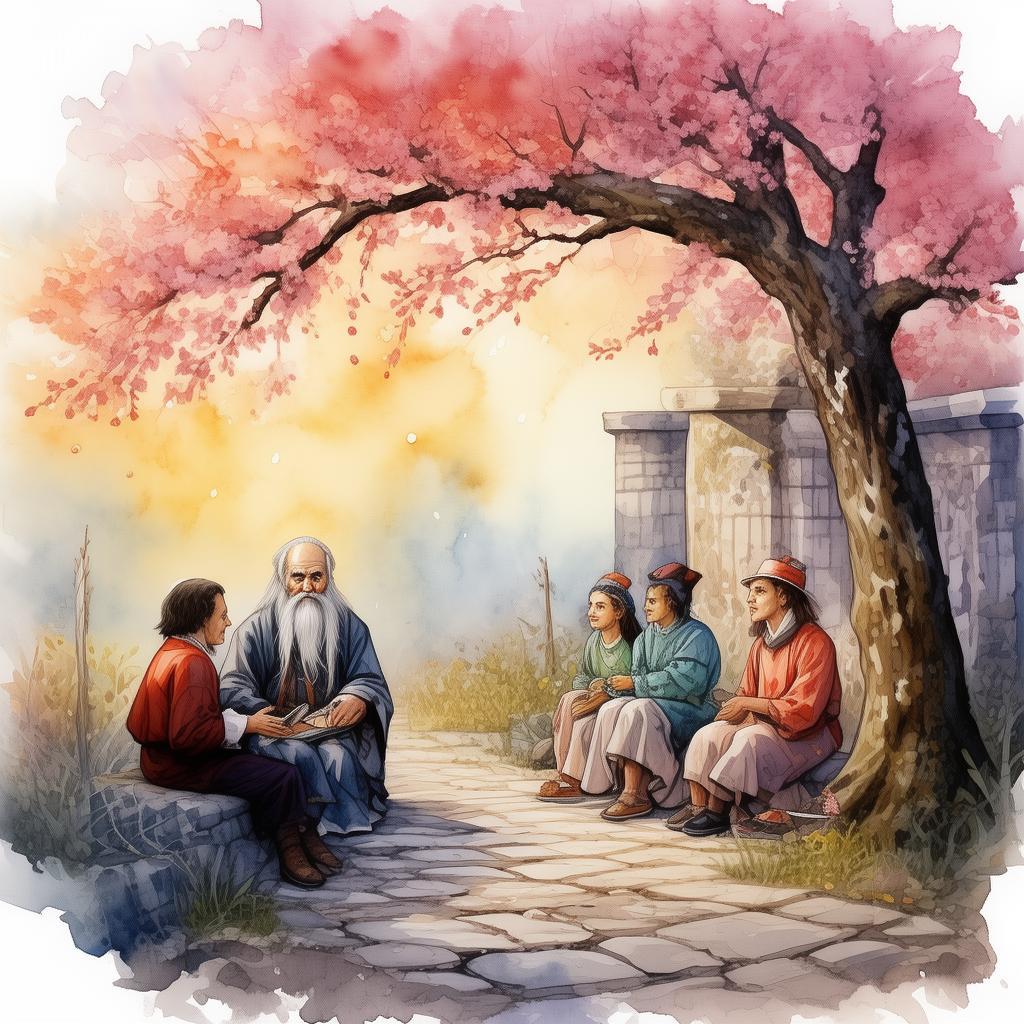The Melancholy Melody: A Composer's Symphony of Heartache
In the bustling city of Lyricalia, where the air was thick with the scent of ambition and the echoes of countless melodies, there lived a composer named Aria. Aria's heart was as vast as the ocean, brimming with the most beautiful and sorrowful of stories. His compositions were not just music; they were the tales of his soul, each note a whisper of his innermost thoughts.
Aria had a passion for opera, a love that transcended the mere creation of beautiful sounds. It was in the hallowed halls of the Opera of the Stars that Aria found his true calling. The opera, with its grandeur and depth, was the perfect canvas for his symphonies. Each opera he wrote was a journey through the human experience, from the heights of joy to the depths of despair.
One evening, as the sun dipped below the horizon, casting a golden glow over the city, Aria sat at his piano, his fingers dancing across the keys. He was working on a new symphony, one that would tell the story of a love that defied all odds. The melody began, a hauntingly beautiful tune that seemed to carry with it the weight of a thousand unspoken words.
"Ah, the sour symphony," Aria whispered to himself, a wistful smile playing on his lips. "The symphony of heartache."
The story of the sour symphony began with a love that was forbidden. Aria had fallen for a young singer, Elara, whose voice was as pure as the crystal-clear streams that wound through Lyricalia. Their love was a tempest, fierce and unyielding, but their union was forbidden by the rigid social hierarchy of the opera world. Elara was a member of the aristocracy, and Aria, though a brilliant composer, was from a humble background.
The symphony was a testament to their love, a love that was both sweet and bitter, a love that was a symphony of contrasts. Each movement of the symphony was a reflection of their relationship—joy and sorrow, passion and betrayal, hope and despair.
The first movement, "The Dream," was a lush, vibrant melody that captured the innocence of their first love. It was a song of pure joy, a celebration of their love. But as the symphony progressed, the melodies grew more complex, the harmonies more intricate.
"The Dance of Despair" was a movement that portrayed the struggles they faced. The music was filled with dissonance and tension, a portrayal of their love being tested by the world around them. It was a dance that was both beautiful and torturous, a dance that seemed to have no end.
As the symphony reached its climax, "The Lament," the music grew more intense, more passionate. It was a dirge for their love, a song of sorrow that echoed through the halls of the opera house. It was a lament that spoke of the pain of unrequited love, of the heartache that comes from knowing that you can never have what you desire most.
In the final movement, "The Resurrection," the music shifted once more, becoming hopeful and uplifting. It was a song of redemption, a song that spoke of the possibility of a new beginning. It was a testament to the power of love, even in the face of adversity.
As Aria performed the final note, the audience was left in silence, their breath held in awe. The sour symphony had touched their hearts, had made them feel the full spectrum of emotions. It was a love story, a story of heartache, but also a story of hope.

In the aftermath of the performance, Elara approached Aria, tears streaming down her face. "You've captured everything," she whispered. "Our love, our pain, our dreams."
Aria nodded, his eyes filled with tears of his own. "It's all in the music," he replied, his voice barely above a whisper.
The sour symphony was not just a composition; it was a love story, a story of heartache and hope, a story that would live on in the hearts of all who heard it. And though Aria's heart was still heavy with the weight of his unrequited love, he found solace in the knowledge that his music would live on, a testament to the power of love and the indomitable spirit of the human heart.
In the years that followed, Aria continued to compose, each symphony a new chapter in his life's story. The Opera of the Stars became a beacon of hope, a place where love, even in its most bitter form, could find a voice. And though Aria's heartache would never fade, his symphonies would continue to resonate, a reminder that in the face of adversity, love can still triumph.
✨ Original Statement ✨
All articles published on this website (including but not limited to text, images, videos, and other content) are original or authorized for reposting and are protected by relevant laws. Without the explicit written permission of this website, no individual or organization may copy, modify, repost, or use the content for commercial purposes.
If you need to quote or cooperate, please contact this site for authorization. We reserve the right to pursue legal responsibility for any unauthorized use.
Hereby declared.









